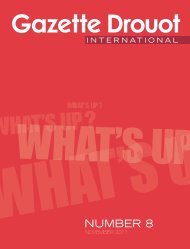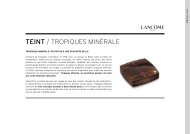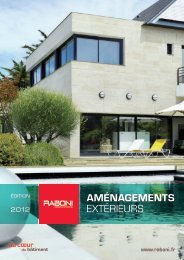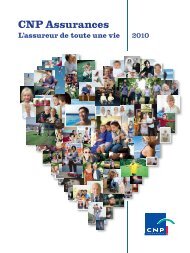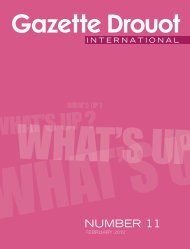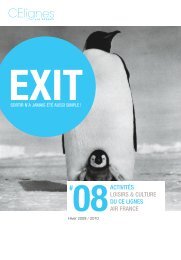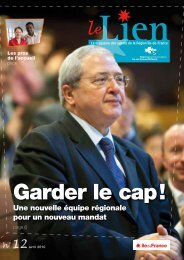Art Market Magazine - Visit zone-secure.net
Art Market Magazine - Visit zone-secure.net
Art Market Magazine - Visit zone-secure.net
You also want an ePaper? Increase the reach of your titles
YUMPU automatically turns print PDFs into web optimized ePapers that Google loves.
THE MAGAZINE COLLECTION<br />
The ritual bronzes of the Meiyintang collection<br />
The subject might seem austere. But far<br />
from it. The exhibition devoted to Chinese<br />
bronzes from the Meiyintang collection by<br />
the Musée Guimet in Paris is truly fascinating<br />
for the richness and variety of its treasures.<br />
Staged like genuine jewels, these ritual objects<br />
made for Shang and Zhou sovereigns bear witness to<br />
the mastery of Chinese bronze-makers from the 16th<br />
century BC onwards, and the considerable refinement<br />
of this ancient civilisation. The exhibition's two curators,<br />
Marie-Catherine Rey and Huei-Chung Tsao, talk<br />
about its high points.<br />
Gazette Drouot: How did an exhibition like this<br />
come about?<br />
M.-C. Rey and H.-Chung Tsao: Through the special relations<br />
between the private collector and the president of<br />
the Musée Guimet, Olivier de Bernon. The Meiyintang<br />
collection of ritual bronzes had never been shown to the<br />
public before this Paris exhibition. Another collection<br />
bearing the name Meiyintang, dedicated to imperial<br />
porcelain, has already been exhibited.<br />
The exhibition and catalogue make little mention<br />
of the collector, or how the collection came about...<br />
The exhibition's approach is both aesthetic and scientific.<br />
We wanted to focus on the characteristics of the<br />
collection, while finding an appealing way to present it<br />
to the general public – a staging that wouldn't intimidate<br />
visitors not very versed in Chinese archaeology.<br />
This is a singular collection because it contains almost<br />
all the forms in the history of Chinese bronze work, and<br />
makes it possible to show the different uses of these<br />
vessels, which have a huge typology. That's why the<br />
132 GAZETTE DROUOT INTERNATIONAL I N° 25<br />
collection is so interesting. The Musée Guimet inherited<br />
a large number of pieces in the past, and has also<br />
made acquisitions, but it cannot claim this exhaustiveness.<br />
The chronology of the collection is extremely<br />
broad, ranging from the Erlitou culture, represented by<br />
a jue libation cup (16th century BC), to chess players of<br />
the Western Han period (206 BC to 9 AD). It's a really<br />
encyclopaedic collection of ritual bronzes.<br />
Did you choose particular pieces from the collection?<br />
We selected 120 of the 207 bronzes available. Some do<br />
not have great marketable value, and are unspectacular,<br />
like the small figurines in the "Towards humanism"<br />
section, but we chose them because they link up<br />
with the museum's archaeological collections, notably<br />
the funerary statues. They also make it possible to<br />
appreciate one man's particular taste, and a keen eye<br />
adept at spotting more picturesque pieces, or ones<br />
produced in the provinces, as well as extravagant works<br />
from the royal workshops. We have tried to show the<br />
place and importance of bronze in China by illustrating<br />
the various forms inherited from ceramics and ennobled<br />
by the material. Bronze is a theme that runs all<br />
through Chinese civilisation. In addition, we were keen<br />
NOTE<br />
The name Meiyintang "conceals" the collections brought together over fifty<br />
years by the brothers Gilbert and Stephen Zuellig, whose family own the<br />
Zuellig group, active in Asia in health services and processed food. Since<br />
January 2013, the Rietberg Museum in Zurich has exhibited 600 ceramics from<br />
the famous collection, on permanent loan. Part of this collection has also<br />
come up in several Sotheby's auctions in Hong Kong: the fifth session<br />
on 8 April this year posted a result of HKD77,677,500 (€7.7M).





